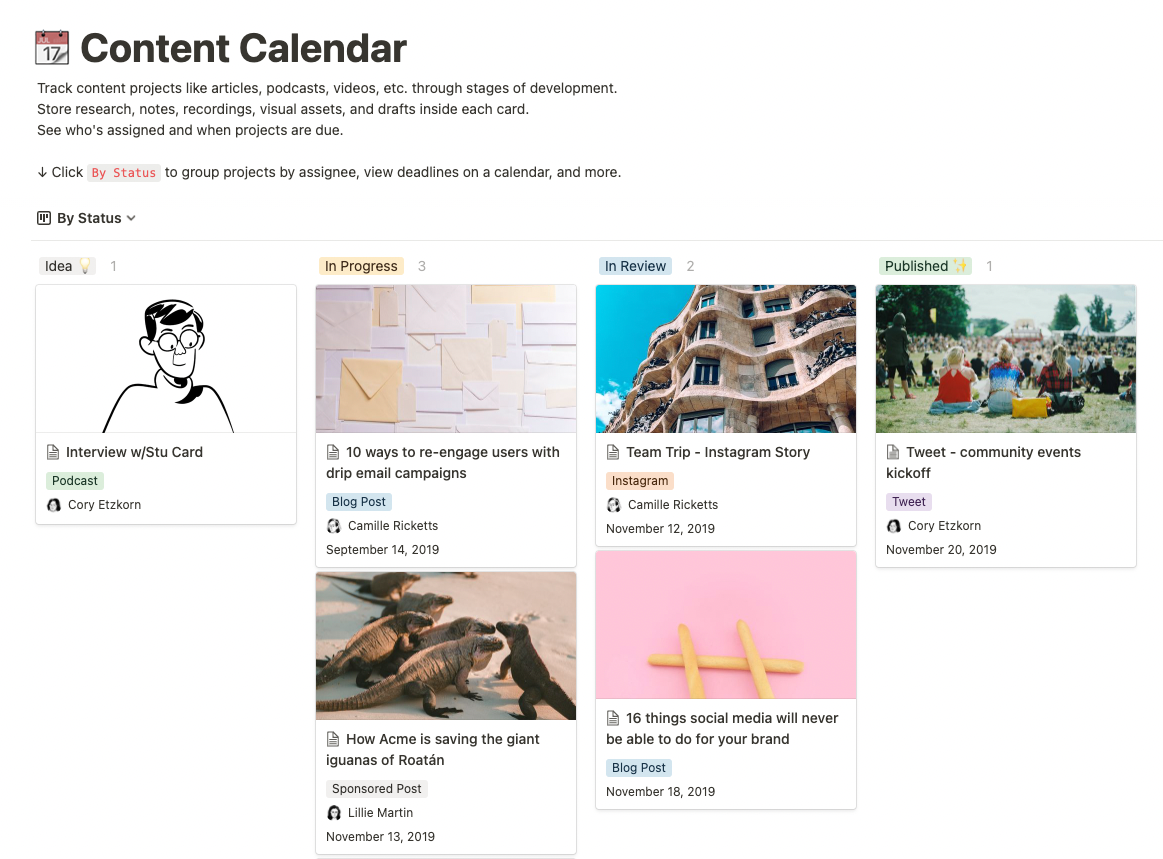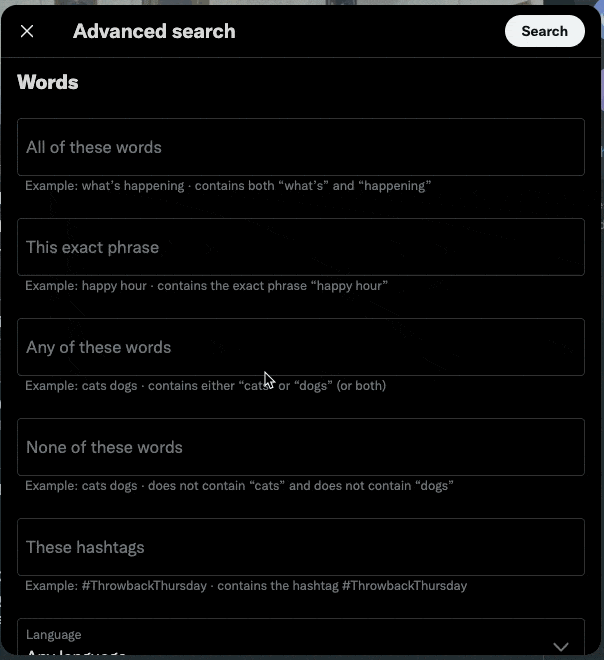How to come up with great blog post ideas, every single time
The blank canvas. The white screen. The blinking cursor. What do I write about now?
What do I have to say that's important enough to be worth publishing? Will anyone even care? This isn't working. I'll try again tomorrow.
We've all been there.
It's terrifying, at times, pushing fresh content out into the world. It can be unnerving wondering how your peers are going to judge your words. Is what you've written good? Will it be received well, or will it create a negative response? Or worse... no response at all?
This thinking often forces us to repress ideas and throw them into the "not worth publishing" bucket. It's a shame because it stifles creativity. This is why we're often left staring at computer screens knowing that we should publish something, but unable to decide on exactly what.
Blink. Blink. Blink.
To combat this: Today we're going to look at some proven techniques for coming up with blog post ideas even when you feel like you've got no creativity left to give. These tips can be used by any type of blogger or publisher, whether you're creating for a public blog, a weekly newsletter, or a membership website!
#1 – Keep an ideas file
The most important thing about inspiration is that you can't predict when it's going to strike. That's why it's essential to build a system that supports your creative work.
Many writers, bloggers, and publishers create something called an ideas file where they drop in thoughts, opinions, questions, and prompts whenever you come across them.
When it's time to plan a blog post, simply look into the file and pull out any of the ideas that waiting to be developed.
One tool you can use to help accomplish this is Notion. They even have a free content calendar template you get started with.

To use it, enter your ideas in the far left column. Then, as you choose which ones to work on, move them to the additional columns on the right as they develop — from a simple idea to an article in progress, and finally to an edited and published article on your website.
The most important element is to build a habit of writing down ideas so that you can build an inventory of inspiration.
#2 - Steal content ideas from others
A great way to come up with initial ideas for blog posts is to consistently expose yourself to the type of content you want to emulate.
- Use a feed reader (we like Feedly) to subscribe to your favorite blogs and check daily to see what's been published.
- Sign up for your favorite writers' newsletters so that you never miss a post.
- Set a weekly calendar appointment as a designated blog reading time for inspiration and ideas.
Don't be afraid to steal ideas that are clearly working for other people. There's a vast amount that can be learned from the success of others.
Just don't actually steal their content. Iterate upon it. Make your version better, unique, and valuable.
#3 - Ask your audience
You can crowdsource content ideas from your readers by asking them to reply to your emails or tweets, starting a private community on Discourse or Circle to host conversations, or even meeting up with your audience at in-person events.
Reader participation and community-driven content are key components for many successful independent bloggers and membership business owners.
Foolish bloggers go out in search of ideas, efficient bloggers allow ideas to come to them.
Ask your readers to tell you what they would like to read more of — and then give it to them. It sounds simple, but remarkably few people actually do it.
Louis Grenier of Everyone Hates Marketers shares some great tips about listening and letting ideas come to you.
#4 - Use targeted searches to ask the internet
Many-a-noble-blogger has been stuck searching for blog post ideas before you, and while that has been an insurmountable hurdle for some, there are many more who have conquered it and documented the process.
Start by figuring out the types of questions people are asking about related to your topic. You can do this by searching forums or websites like Reddit and Quora. Twitter is also a great place to see what people are saying in real-time about a particular subject.

This is one scenario in which falling down internet rabbit holes can lead to something good: an abundance of ideas you can write about, questions you can answer, and people you can reach out to for follow-up.
#5 - Expand existing blog posts
Look through your analytics history and figure out what your most popular blog posts of all time are. These are your blockbusters.
Weeks, months, and years after publication, they still bring in a steady stream of new visitors.
So you know this content works, the next question is: How could you expand on it? Could you do a follow-up? Could you refresh the content in the post with a new and improved version?
Updating posts is a great SEO tactic to catch some low-hanging fruit and get even more people reading your post. You've already done most of the hard work. Check out this in-depth guide from AHREFs about how to do a content audit and update your best posts.
#6 - Identify trending topics
There are lots of ways to find out what's trending online, as well as tools for discovering what people actually search for related to specific topics of interest.
Leveraging these trends into article ideas is an excellent tactic that can increase your traffic by staying ahead of the curve. Here are a few tools to help you do that:
- Google Trends - Figure out what topics are trending over a specific timeframe.
- BuzzSumo - Enter a keyword to find out who ranks and what they're writing about.
- AnswerThePublic.com - Enter any term and get a huge list of synonyms and related terms that people actually search for.
- Exploding Topics - Discover niche ideas before they explode into mainstream trends.
#7 - Share your story
Sometimes the best content idea is the one that tells the story of all the other posts. Regardless of what you blog about, you've probably been doing it for a while now.
- What have you learned in that time?
- What has changed since you started?
- If you had to go back and give yourself one piece of advice at the start of your career, what would it be?
These posts aren't just an exercise in narcissism, they can be incredibly useful for other people in your industry. Everyone has to start somewhere, and by learning from your mistakes the next generation can progress even quicker.
Give something back to your audience by offering them a behind-the-scenes look into your journey and thought process.
#8 - Write a detailed guide
What's the best kind of blog post? The kind that gets people to read 12 more.
Linking your existing posts together (called internal linking) properly is a good way to capitalize on this.
Sit down and go through your old posts. Group related posts together and see if you can order them in a way that makes sense as a mini-guide so that reading them sequentially increases the value.
This allows you to take advantage of ideas you've already written about.
Add an introduction, a conclusion, light descriptions, and updated links to each post. You now have a guidepost that will send people off on a click-quest around your blog.
Have a look at this wonderful guide to creating "hub and spoke" content by Jimmy Daly to learn more about how this works:

#9 - Borrow another creator or expert's brain
Is your brain tired? Borrow someone else's!
Who do you look up to in your industry who your readers might be interested in? Send them an email and ask if you can do an interview.
The real challenge is to come up with interesting questions to get your subject talking. After that, they'll do the hard work of generating fantastic content on your behalf.
But remember, interview quality is paramount.
The web is littered with boring "so tell us who you are and what you do" posts that add little value. Don't repeat their mistakes.
Instead, write a proper introduction for your subject rather than asking them to do it for you. Do your research and ask them questions (A) they want to answer and (B) they might not have answered in any other previous interview.
That's where the magic lies.
#10 - Do competitor analysis to find content gaps
What works well for your peers and competitors might also work well for you. Do some research to find out what keywords your competitors rank for, and check out their top-performing articles.
We like to use AHREFs to do this research, check out their guide on doing an effective content gap analysis.
The key here is to identify opportunities with a low enough keyword difficulty where you can create unique content, thereby capturing a slice of the pie.
Could you expand on what has already been written and dramatically improve it? Do you have a new and interesting angle on the same topic? Have you got proprietary data which you can use to craft a new and interesting blog post?
Your creativity, opinions, and niche are assets you can leverage to stand out by offering readers something they can't find anywhere else.
#11 - Train your idea muscle
Coming up with ideas is a muscle that needs exercising. The more often you do it, the stronger that muscle becomes.
Come up with blog post ideas every single day and you'll soon start to notice it becoming more natural.
Here are two resources that will help:
- The best books on idea generation
- The ultimate guide to beating writer's block
Spend a few minutes each day using these resources to generate new ideas, then move over the best ones into the idea column on your content calendar (or whatever equivalent tool you use). This will keep your creative momentum fired up!
What to do next
Great content ideas are the heart of a successful creator business. Without great ideas, you've got nothing to publish, promote, or monetize.
The priority is to find a system that works for you, from dreaming up new ideas, to organizing them for easy access, and finally to building systems around them that make bringing them to life a breeze.
Now get yourself going:
- Start your ideas file.
- See what you can learn from the top creators in your field.
- Never be afraid to hit the publish button.
Your blog could grow to become something bigger than even you could imagine. But it can only happen if you start.






